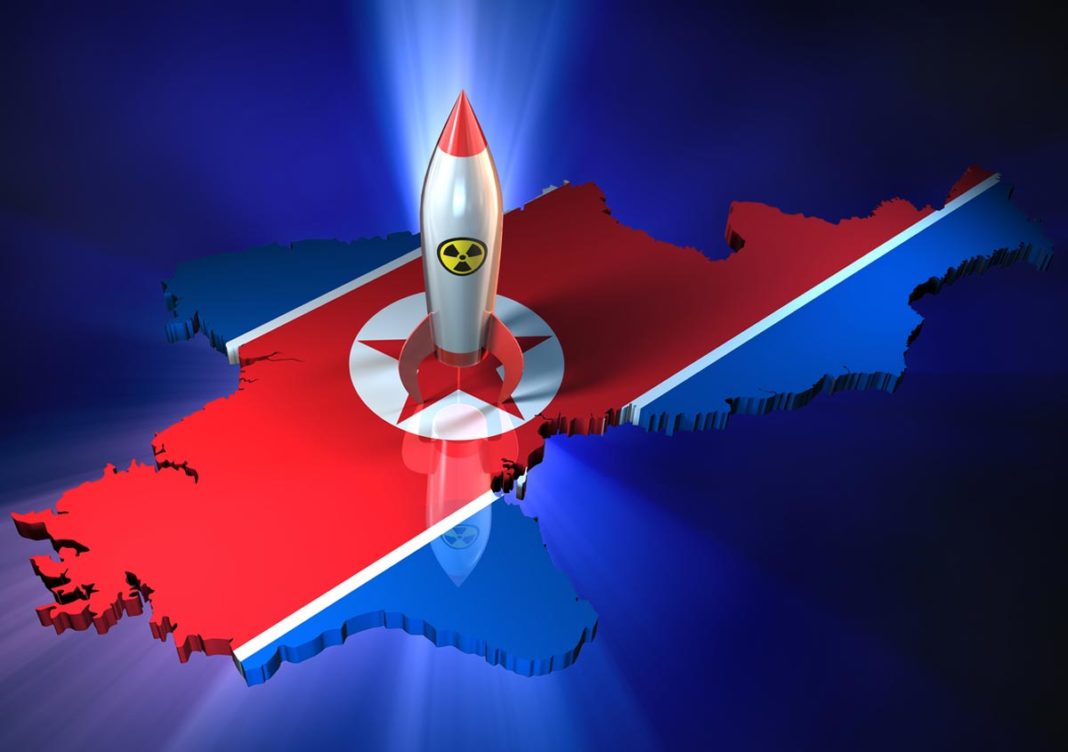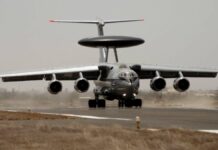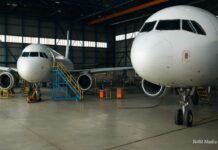The title sounds somewhat like the title of the world famous Hollywood film ‘The Guns of Navarone’. But that is what I intended it to be. This epic adventure war film with a great star cast was about some gigantic naval guns of Nazi Germany deployed on the impregnable island of Navarone from where they seriously threatened the Allied naval ships in the area. The nukes of North Korea happen to be in a similar situation. They too are formidable and seriously threaten world peace.
How tiny a nation they are
North Korea (Democratic People’s Republic of Korea) is a tiny nation. With a population of just about 2.58 crore in 2020 and an area of 120,540 square km, its population is only a little (1.6%) more than that of the Indian state of Haryana and its area is a little (7.3%) less than the Indian state of Tamil Nadu. Its GDP is just $18 billion compared to India’s $2623 billion , that is, just 0.7% of India’s.
North Korea has just 65 universities. India has nearly 1000 universities and 3500 engineering colleges.
Working despite sanctions and isolation from the world
Most importantly, North Korea faces international isolation following a battery of sanctions imposed against it by the UN. North Korea is, for all practical purposes, cut off from the rest of the world. In other words, its scientists and engineers have to work in complete isolation without the benefit of any exchange of ideas with their counterparts in the rest of the world.
Researchers of nations where English is commonly used have access to those billions of books and research papers which have been published in English or have been translated into English. The North Korean researchers do not have this privilege and there is no reason to believe that they have any secret translation service which has translated those billions of books and research papers into Korean. This means that they have been working from a very limited reference base.
Also Read: If Threatened, US Might Have To Wipe Off North Korea: POTUS Warns At UNGA
They have been able to design various weapon systems like the main battle tankP’okpung-ho, the 170 mm self-propelled gun Koksan M1989, and the 240 mm multiple-rocket launcher ML-240, which far bigger countries have not been able to design by themselves without foreign collaboration. There is no collaboration, joint development, joint venture, or technology transfer with any foreign country—it’s all their own. In fact, they have a whole program called Juche-Po (“self-sufficiency”).
Poor they may be, hungry they may be; impoverished they may be; yet intelligent they are.
And yet what they have achieved
North Korea has conducted six nuclear tests so far—in 2006, 2009, 2013, twice in 2016, and in 2017.
Of these, only the first test had a low yield not exceeding 2 kt (that is, equivalent to 2 kilotons or 2000 tons of TNT, a conventional high explosive). The yields of the subsequent four tests were 5.4 kt, 16 kt, 16.5 kt and 25 kt respectively.
The progression of yields in these tests is significant. It shows that they steadily improved upon their bombs. However, their sixth test is remarkable. This had a yield of about 250 kilotons. Even according to India’s ISRO, the yield was in the range of 245 to 271 kt.
North Korea claimed that it was a hydrogen bomb. Alarmed by it, the West claimed that it was not a genuine Teller-Ulam design hydrogen bomb that has two or more stages, but a boosted fission weapon. In a boosted fission weapon, the explosive power of the basic nuclear weapon that we discussed earlier is enhanced by using small quantities of fusion fuel.
It is difficult to find out the truth but it should be kept in mind that if it were a fusion boosted fission weapon, it requires one to introduce a small amount (say 2 grams) of deuterium-tritium mixture. Both are isotopes of hydrogen. But tritium is extremely rare and making it by itself is a technological feat of very high standards.
However, the simple fact is that, as calculated by scientists, using 1.5 grams of tritium increases the explosive power of a plutonium bomb by 11.6 kt. Thus, there is no way it can take a bomb’s yield up to say 250 kt and that lends some credence to the claim of a hydrogen bomb.
Compare them with India’s nuclear tests
Why I told all this? I told all this so that you may compare it with what we, a country of 140 crore people have achieved. Compare this with India’s tests in 1998. Officially, India claimed that of the five test explosions, one was a hydrogen bomb or thermonuclear bomb, the remaining being fission devices.The yields of the tests were controversial from the very beginning. One of the senior DRDO scientists K. Santhanam called it a fizzle. One the other hand, government’s Principal Scientific Adviser R. Chidambaram sought to refute it.
I have no intention of getting into that controversy. I will, from my side, cite a much respected source called nuclearweaponarchive.org, in which Carey Sublette, in his paper ‘What Are the Real Yields of India’s Test?’ concludes that the yield of Shakti-I (the one claimed to be a hydrogen bomb) was limited to about 31 kt. He says that this would be consistent with a partially successful thermonuclear test with a roughly 15 kt primary stage and a 15 kt secondary yield.Readers are, of course, free to believe in whatever they like.
We can look at it in another way also. Nobody in the whole world has been able to make a hydrogen bomb that small. They are necessarily in the range of hundreds of kilotons and usually in the range of megatons. As we will shortly discuss, miniaturizing even fission bombs is extremely difficult, doing that for hydrogen bombs is almost impossible for anybody.
Talking of nuclear warheads on North Korean missiles
There is a fundamental difference between a nuclear device that is tested in a tunnel and what you would actually mount on a missile. The device being tested in a tunnel can be huge. You could hoist it with a crane also. However, when you have to throw it using a missile, it has to be small both in size and weight. It has to be small in size so that it can fit in the nose cone of the missile. It has to be small in weight because the missile can carry on a limited weight.
Technically, this is called miniaturization. It is a very complex problem in nuclear weapons design. A missile warhead is subjected to enormous stresses during lift-off and re-entry. Hence its mechanical, electro-mechanical and electronic components have to extremely robust to function reliably.
The very fact that North Korea has been testing its missiles so very often means that they have succeeded in miniaturizing their warheads. There is no point making bigger and bigger missiles if you do not have suitable nuclear warheads to mount on them. It does not make sense to throw 500 kg on TNT to a range of say 2000 km after spending billions of dollars.
Nuclear devices by themselves do not make much sense. You have to have reliable means of delivering them to the target. Nuclear weapons are tested deep underground and generally their yields can be estimated only by measuring the seismic waves produced by them. The seismic instruments could be thousands of km away. As such, there is often scope for dispute about the calculations. However, missiles are fired in the open for the whole world to see. There is never any dispute about what a missile has done, at least in terms of its range. Satellites note from where they are fired and where they hit. This means that the success of a missile is hardly ever in doubt.
North Korean missiles
On this October 11 itself, North Korea showed off its growing arsenal of missiles in one of its largest-ever exhibitions of military gear, as its leader, Kim Jong-un, said he didn’t believe repeated assertions by the United States that it harboured no hostile intent toward his country.
Photos from the exhibition showed an array of new missiles that North Korea has tested or revealed in the past five years. The display included a hypersonic missile, submarine-launched ballistic missiles (SLBM) and a new, untested intercontinental ballistic missile (ICBM) that had made its first public appearance in a military parade last October. That missile looked bigger than the three long-range missiles North Korea launched in 2017.
Among their missiles, according to a review by the BBC, the Hwasong-12 is thought to be able to reach as far as 4,500km, putting US military bases on the Pacific island of Guam well within striking distance.Later, the Hwasong-14 had a range of 8,000km (although some studies suggested it could travel as far as 10,000km if fired on a maximum trajectory), making it capable of reaching New York. Eventually, the Hwasong-15 was tested in a near vertical trajectory, going as high as 4,500 km meaning it could have a range of some 13,000 km, putting the entire continental US in its range.
Compare these with the missiles of India. Even as we have made great progress in missile technology, the Agni-V, according to missilethreat.csis.org, is believed to have a range of 5,000-8,000 km.
Let us be fair and acknowledge their great technological achievements
North Korea’s achievements in nuclear and missile technologies are, ladies and gentlemen, by all means, simply phenomenal. Let us admit it. Kim Jong Un might be guilty of repression, brutality, reckless behaviour and what not; the fact remains that whipping a man cannot make him design, innovate, invent, fabricate and manufacture. The human mind cannot be driven by whips.
You can beat a man to death, but you cannot make him an intelligent man by threatening him or torturing him. This means that whatever technological progress they have made, is due to the willing contribution of its scientists and engineers made over decades.
Also Read:
- December 27, 2025
- December 27, 2025
- December 25, 2025
- December 14, 2025
- December 6, 2025
- November 25, 2025



















